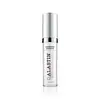What's inside
What's inside
 Key Ingredients
Key Ingredients

 Benefits
Benefits

 Concerns
Concerns

 Ingredients Side-by-side
Ingredients Side-by-side

Cyclopentasiloxane
EmollientDimethicone Crosspolymer
Emulsion StabilisingPentaerythrityl Tetraisostearate
EmollientHeptyl Undecylenate
EmollientGlycine Soja Oil
EmollientPanthenyl Triacetate
Palmitoyl Tripeptide-1
Skin ConditioningPalmitoyl Hexapeptide-12
Skin ConditioningNaringenin
Skin ConditioningOleuropein
AntioxidantOlea Europaea Leaf Extract
PerfumingPhosphatidylserine
Emulsion StabilisingArnica Montana Extract
Skin ConditioningPhospholipids
Skin ConditioningDunaliella Salina Extract
Skin ConditioningTocopherol
AntioxidantAscorbyl Palmitate
AntioxidantSqualane
EmollientCaprylic/Capric Triglyceride
MaskingCaprylyl Methicone
Skin ConditioningPropylene Carbonate
SolventStearalkonium Hectorite
Gel FormingCyclopentasiloxane, Dimethicone Crosspolymer, Pentaerythrityl Tetraisostearate, Heptyl Undecylenate, Glycine Soja Oil, Panthenyl Triacetate, Palmitoyl Tripeptide-1, Palmitoyl Hexapeptide-12, Naringenin, Oleuropein, Olea Europaea Leaf Extract, Phosphatidylserine, Arnica Montana Extract, Phospholipids, Dunaliella Salina Extract, Tocopherol, Ascorbyl Palmitate, Squalane, Caprylic/Capric Triglyceride, Caprylyl Methicone, Propylene Carbonate, Stearalkonium Hectorite
Water
Skin ConditioningC12-15 Alkyl Benzoate
AntimicrobialGlycerin
HumectantPEG-16 Macadamia Glycerides
EmollientDimethicone
EmollientAcetyl Glucosamine
Skin ConditioningAlcohol Denat.
AntimicrobialHydroxyethyl Acrylate/Sodium Acryloyldimethyl Taurate Copolymer
Emulsion StabilisingSodium Citrate
BufferingTetrahexyldecyl Ascorbate
AntioxidantSodium Hyaluronate
HumectantGlycine
BufferingHydroxyproline
Skin ConditioningProline
Skin ConditioningAcetyl Hexapeptide-8
HumectantHexapeptide-48 Hcl
Skin ConditioningPalmitoyl Tripeptide-1
Skin ConditioningPalmitoyl Tetrapeptide-7
Skin ConditioningDipeptide Diaminobutyroyl Benzylamide Diacetate
Skin ConditioningSodium Acetylated Hyaluronate
HumectantPisum Sativum Extract
Skin ConditioningGlycine Soja Seed Extract
Skin ConditioningGlucosamine Hcl
Ophiopogon Japonicus Root Extract
Skin ConditioningBambusa Vulgaris Leaf/Stem Extract
HumectantHydrolyzed Lupine Protein
Skin ConditioningOleic Acid
EmollientSorbitan Isostearate
EmulsifyingC18-36 Acid Glycol Ester
EmollientPEG-7 Trimethylolpropane Coconut Ether
EmulsifyingSorbitan Laurate
EmulsifyingHexylene Glycol
EmulsifyingPolyisobutene
C18-36 Acid Triglyceride
EmollientCarbomer
Emulsion StabilisingAcrylates Copolymer
Citric Acid
BufferingCaprylyl Glycol
EmollientEthylhexylglycerin
Skin ConditioningPotassium Sorbate
PreservativePhenoxyethanol
PreservativeWater, C12-15 Alkyl Benzoate, Glycerin, PEG-16 Macadamia Glycerides, Dimethicone, Acetyl Glucosamine, Alcohol Denat., Hydroxyethyl Acrylate/Sodium Acryloyldimethyl Taurate Copolymer, Sodium Citrate, Tetrahexyldecyl Ascorbate, Sodium Hyaluronate, Glycine, Hydroxyproline, Proline, Acetyl Hexapeptide-8, Hexapeptide-48 Hcl, Palmitoyl Tripeptide-1, Palmitoyl Tetrapeptide-7, Dipeptide Diaminobutyroyl Benzylamide Diacetate, Sodium Acetylated Hyaluronate, Pisum Sativum Extract, Glycine Soja Seed Extract, Glucosamine Hcl, Ophiopogon Japonicus Root Extract, Bambusa Vulgaris Leaf/Stem Extract, Hydrolyzed Lupine Protein, Oleic Acid, Sorbitan Isostearate, C18-36 Acid Glycol Ester, PEG-7 Trimethylolpropane Coconut Ether, Sorbitan Laurate, Hexylene Glycol, Polyisobutene, C18-36 Acid Triglyceride, Carbomer, Acrylates Copolymer, Citric Acid, Caprylyl Glycol, Ethylhexylglycerin, Potassium Sorbate, Phenoxyethanol
 Reviews
Reviews

Alternatives
Ingredients Explained
These ingredients are found in both products.
Ingredients higher up in an ingredient list are typically present in a larger amount.
Palmitoyl Tripeptide-1 is also known as pal-GHK. It is made up of 3 amino acids and palmitic acid, a fatty acid that helps it absorb into skin more easily.
This peptide is as a signal peptide, meaning it tells the skin to produce more collagen. Collagen is the key protein that helps form the skin's structure and keep it plump, firm, and hydrated.
By boosting collagen production, this ingredient supports a stronger skin barrier and helps reduce the appearance of wrinkles.
You'll most likely see this ingredient paired with Palmitoyl Tetrapeptide-7 in the well-known Matrixyl 3000 complex. While results from in-house testing should be viewed cautiously, this peptide duo is among the most studied and widely used in modern skincare.
Due to its palmitic acid base, this ingredient may not be safe for Malassezia folliculitis.
Read more about other common types of peptides here:
Learn more about Palmitoyl Tripeptide-1